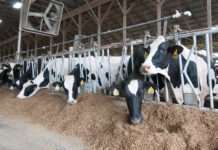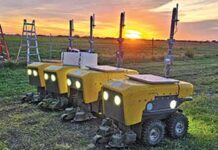Crop may have a place in areas where water is less available
MANHATTAN, Kan. – Is there room for cotton in Kansas…the Wheat State?
There certainly is, said Kansas State University water resources engineer Jonathan Aguilar, who is currently studying the best ways to grow a crop that is traditionally grown in warmer climates.
“One of the reasons we are looking at cotton is because it is drought resistant, or at least doesn’t need a lot of water compared to other crops grown in (southwest Kansas),” said Aguilar, who is located in K-State’s Southwest Research-Extension Center in Garden City.
“The other reason we are doing research on growing cotton is because we are at the northern edge of cotton production in this region. We’ve been growing cotton for three years; our first question was whether it will grow here, and if it will, can it produce a decent yield?”
So far, he says, the answers are “yes” and “yes.”
“We are still getting samples for this year’s crop,” Aguilar said, “but it looks like we will have a nice yield.”
Much of K-State’s research is focused on irrigated cotton, as part of a rotation with other crops. Even though researchers are using available water, Aguilar said the crop requires less of it than other crops.
“Surprisingly in our region – and I think our colleagues in Oklahoma say the same thing – if we put more water on cotton, it actually diminishes the yield compared to when you are putting just the right amount, or even limiting the amount of water that the crop receives.”
In other words, growing cotton in Kansas may require applying water at the proper time, rather than the actual volume applied.
“We are finding that if we put water just at the critical stage of growth, it will out-perform fully irrigated cotton,” Aguilar said.
Aguilar noted that K-State’s research will continue for two more years to fully understand the proper management to grow profitable cotton in the state. Compared to such states as Texas and Oklahoma, Kansas has fewer warm days and the populations are not the same as are grown further south.
“There’s an art and a science to cotton,” he said. “We are learning more about that. There are instances when we can apply water at the right time when it will produce more compared to not applying water in a strategic way.”
More information on water management in southwest Kansas is available online from K-State Southwest Research-Extension Center.
-30-
FOR PRINT PUBLICATIONS: Links used in this story
Southwest Research-Extension Center (Garden City), www.southwest.k-state.edu/index.html
Water Management (Southwest Research-Extension Center), www.southwest.k-state.edu/program_areas/water_management/index.html
K State Research and Extension is a short name for the Kansas State University Agricultural Experiment Station and Cooperative Extension Service, a program designed to generate and distribute useful knowledge for the well being of Kansans. Supported by county, state, federal and private funds, the program has county extension offices, experiment fields, area extension offices and regional research centers statewide. Its headquarters is on the K State campus in Manhattan. For more information, visit www.ksre.ksu.edu. K-State Research and Extension is an equal opportunity provider and employer.
Story by:
Pat Melgares
785-532-1160
[email protected]
For more information:
Jonathan Aguilar
620-275-9164
[email protected]





